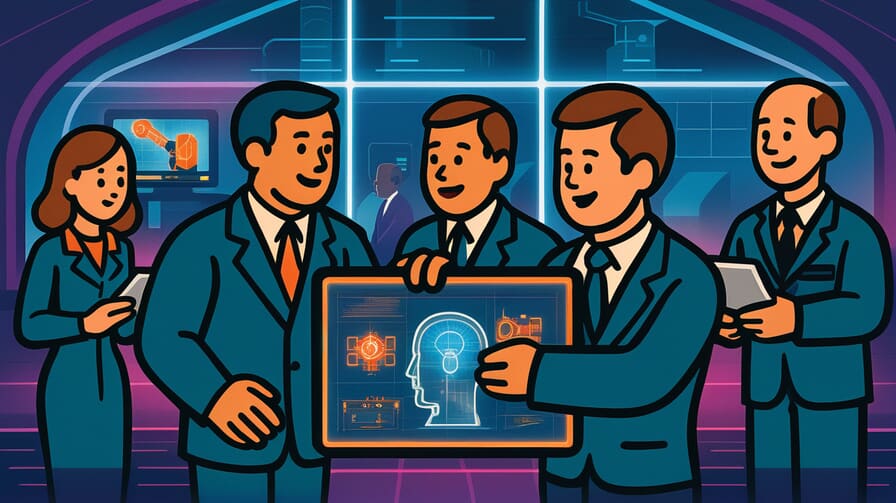[Disclaimer] This article is reconstructed based on information from external sources. Please verify the original source before referring to this content.
News Summary
The following content was published online. A translated summary is presented below. See the source for details.
The article highlights the growing importance of OpenUSD and digital twins in industrial and physical AI applications within the NVIDIA Omniverse ecosystem. As of 2025, investment in industrial AI and physical AI is accelerating rapidly, driven by the need for smarter automation, predictive maintenance, and quality control in manufacturing sectors. This surge in AI adoption is reshaping competitive dynamics and driving significant capital deployment. The demand for digital twins has increased substantially, with these virtual replicas transforming workflows across various industries. Recent advancements in OpenUSD technology include improved CAD interoperability, enhanced capabilities in interactive media, and expanded applications in industrial digital twins. NVIDIA has emphasized OpenUSD as a foundational ecosystem for digital twins and physical AI, introducing new Omniverse libraries and AI infrastructure to support these efforts. The Alliance for OpenUSD has formed new Interest Groups focused on industrial digital twins and web technologies, expanding OpenUSD’s applicability and interoperability.
Source: NVIDIA
Our Commentary
Background and Context

The integration of OpenUSD and digital twins represents a significant shift in how industries approach simulation, design, and operational optimization. OpenUSD, or Universal Scene Description, provides a standardized framework for 3D data exchange, while digital twins create virtual replicas of physical assets or processes. The convergence of these technologies within NVIDIA’s Omniverse ecosystem is enabling more sophisticated industrial and physical AI applications, transforming sectors from manufacturing to healthcare.
Expert Analysis
The rapid advancement of OpenUSD and digital twin technologies is reshaping industrial landscapes. NVIDIA’s focus on integrating these technologies into its Omniverse platform demonstrates the growing demand for comprehensive, real-time simulation and AI-driven optimization tools. The formation of new Interest Groups by the Alliance for OpenUSD indicates a collaborative effort to expand the technology’s applicability across various sectors.
Key points:
- Industrial AI investment is driving the adoption of digital twins for predictive maintenance and process optimization
- OpenUSD advancements are improving interoperability between traditional CAD and modern 3D content pipelines
- NVIDIA’s Omniverse is evolving to support more complex simulations and AI-driven workflows
Additional Data and Fact Reinforcement
Recent statistics highlight the significant growth in the digital twin and industrial AI markets:
- The digital twin market is projected to reach approximately USD 149.81 billion by 2030
- 95% of manufacturing companies plan AI/ML and generative AI investments within five years
- Enterprise IoT integration is forecasted to account for 72% of market revenue by 2028, up from 70% in 2023
Related News
The advancements in OpenUSD and digital twins are closely tied to developments in AI reasoning and custom silicon (ASICs) for AI workloads. Additionally, the integration of these technologies is impacting sectors beyond manufacturing, including healthcare, energy, and urban planning, with companies like Trimble incorporating OpenUSD workflows for complex infrastructure simulations.
Summary

The rapid evolution of OpenUSD and digital twin technologies, driven by industrial AI investments, is transforming industrial operations and design processes. As these technologies become more integrated and accessible through platforms like NVIDIA’s Omniverse, we can expect to see continued innovation and efficiency gains across multiple sectors, reshaping how industries approach complex problem-solving and operational optimization.


